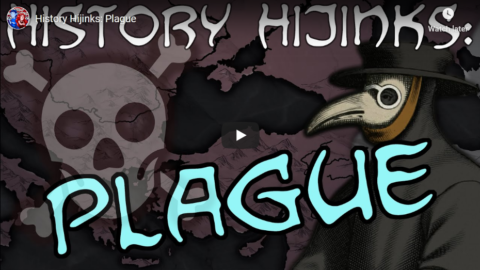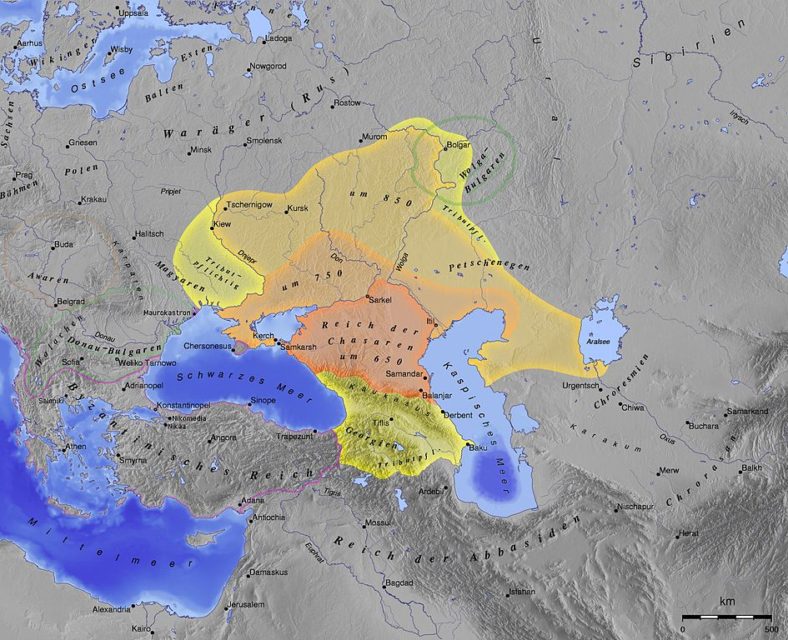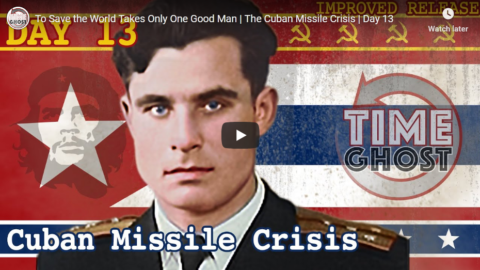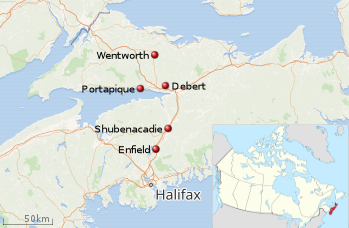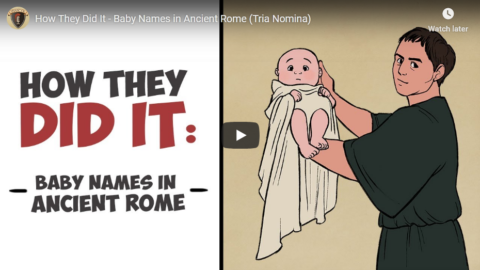Overly Sarcastic Productions
Published 17 Jul 2020Escape the worries of our modern world by visiting the high middle ages and learning about something esoteric and irrelevant: Plague!
In this video, I attempt to actually teach you something about how the medieval world worked and how it responded to this existential threat, rather than dredging up 3rd grade plague facts for easy views. Oops, did I say that out loud?
SOURCES & Further Reading: The Black Death: The World’s Most Devastating Plague via The Great Courses by Dorsey Armstrong, “From Plague Doctor to PPE” by Bernadette Banner (https://youtu.be/ZniriC-jTHg), “Biological Warfare at the Siege of Caffa” from the CDC (https://wwwnc.cdc.gov/eid/article/8/9…)
This video was edited by Sophia Ricciardi AKA “Indigo”. https://www.sophiakricci.com/
Our content is intended for teenage audiences and up.
DISCORD: https://discord.gg/kguuvvq
PATREON: https://www.Patreon.com/OSP
MERCH LINKS: https://www.redbubble.com/people/OSPY…
OUR WEBSITE: https://www.OverlySarcasticProductions.com
Find us on Twitter https://www.Twitter.com/OSPYouTube
Find us on Reddit https://www.Reddit.com/r/OSP/
July 20, 2020
History Hijinks: Plague
A lost nation that lasted for 300 years in (relative) peace and prosperity
I’d heard of the Khazar Khaganate occasionally, but didn’t know much about it until I read a useful summary by Lawrence W. Reed:
The list of extinct countries includes the better known ones like the USSR (aptly dubbed “the Evil Empire” by Ronald Reagan) and Yugoslavia, as well as hundreds of largely forgotten others like Majapahit, Assyria, Babylonia, Burgundy, and the Ottoman Empire. Far more countries are long gone, in fact, than the 195 on the map today. As a history lover, I’ve never yet discovered a country whose inhabitants’ experience was devoid of interesting facts and lessons.
Take Khazaria, for example. It lasted over 300 years (650 to 965 AD) and covered more territory than the combined Scandinavian nations of our time. It spanned the eastern half of modern-day Ukraine, the steppes of the Volga-Don region of present Russia, the entire Crimean Peninsula, and the northern Caucasus. Its southern portion took in most of the shorelines of three seas: the Black, the Caspian and the Aral.
It’s my thesis that for a country to be “successful” for a considerable period — success being defined loosely here as economically prosperous, politically stable, and militarily defensible — it must possess substantial TTD. That’s not a pronounceable acronym, unfortunately, but it stands for trade, tolerance and decentralization.
Each of these three criteria for success is worth volumes of discussion but here’s the nub of it: When economic freedom and private property exist, trade flourishes. And trade is what peaceful humans do to satisfy wants and improve material well-being. Choke it off and living standards plummet. Tolerance is a sign that people appreciate the benefits derived from diversity in personal choices. An intolerant people deprive themselves of what others can offer and waste time and resources fighting instead of collaborating. Decentralization preserves the rich identities of local communities and stymies the concentration of authority with its inevitable corruption. Power dispersed is power tamed.
So a successful country is one that can boast a lot of TTD. It encourages exchange, celebrates diversity and avoids top-down, political command-and-control. Almost every “failed state” in history did just the opposite by stifling commerce; stoking racial, ethnic or nationalistic hatred; and/or installing a dictatorship.
Khazaria, to its great credit, practiced remarkable measures of trade and tolerance and enough decentralization to prevent its government from sabotaging either one. In the end, it met its demise not from internal decay but from foreign assault.
To Save the World Takes Only One Good Man | The Cuban Missile Crisis | Day 13
TimeGhost History
Published 19 Jul 2020On Sunday, 28 October, 1962 the Cuban Missile Crisis comes to an end to end all things, and almost everything. Only one young man, Vasili Arkhipov will stand between humanity and nuclear armageddon.
Join us on Patreon: https://www.patreon.com/TimeGhostHistory
Hosted by: Indy Neidell
Written by: Spartacus Olsson
Director: Astrid Deinhard
Producers: Astrid Deinhard and Spartacus Olsson
Executive Producers: Astrid Deinhard, Indy Neidell, Spartacus Olsson, Bodo Rittenauer
Creative Producer: Joram Appel
Post-Production Director: Wieke Kapteijns
Research by: Spartacus Olsson
Edited by: Daniel Weiss
Sound design: Marek KaminskiColorizations:
– Carlos Ortega Pereira (BlauColorizations) – https://www.instagram.com/blaucoloriz…Sources:
http://www.jproc.ca/crypto/hotline.htmlSoundtracks from Epidemic Sound:
– “Cold Eyes” – Elliot Holmes
– “From the Depths” – Walt Adams
– “Moving to Disturbia” – Experia
– “When They Fell” – Wendel Scherer
– “Under the Dome” – Philip Ayers
– “Scope” – Got Happy
– “Symphony of the Cold-Blooded” – Christian Andersen
– “City Night Lights” – Elliot Holmes
– “Secret Cargo” – Craft Case
– “Too Young for This Shirt” – Elliot Holmes
– “Juvenile Delinquent” – Elliot Holmes
– “Drifting Emotions 3” – Gavin LukeArchive by Screenocean/Reuters https://www.screenocean.com.
A TimeGhost chronological documentary produced by OnLion Entertainment GmbH.
From the comments:
TimeGhost History
59 minutes ago (edited)
When we recorded this the first time, we didn’t have the chance to release these day by day. It took us almost half a year from when we had the idea until the last episode came out. We still felt that it was a revelation to see it chronologically. For me as writer it was in any case a deep dive into a story that I thought I knew, but rediscovered by reassembling the source documents in the exact order things happened. I learnt new aspects and gained an incredibly more detailed understanding of both the events and the people involved. But today, on Sunday July 19, 2020 it is the fourteenth day that both Indy, Astrid and I watch the remade episodes completed as they are released every day, I haven’t even watched this last episode yet, and even though I know exactly what is going to happen, I’m excited. This is crazy, crazy stuff.And now, the three of us are sitting in the garden in Bavaria preparing to shoot the next months shows. And when we look back and talk about it it we’re all so glad that we got the chance to make this even better. Astrid could go full out on the set, and do even more with Indy’s costume. We had fun adding drama with the light. Indy make the delivery even better by changing the tenses to the present and altering the script slightly so that it felt more immediate. But perhaps more than anything, we could get more, better archive, get our editors added touch, and rethink the music score so that it was more consistent and period appropriate.
We also want to take this moment to thank:
The TimeGhost Army – it is your membership that enabled us to improve to this level from 2017 until now – you are the souls of TimeGhost.
Wieke, who directed the post-production and put his personal flair into it – especially grateful for the choice of music.
Daniel and Karolina who did a fantastic job on the editing.
All of our colorizers that made the portraits come alive in technicolor splendor (OK, OK… RGB splendor, but same, same)
Marek who sound engineered and made it sound so much better than what I managed in the first round.
Joram who made sure that we had all the publishing in order so that it worked day by day.And all of the rest of the TimeGhost team that as usual had their hands full with this and all the mad stuff we do.
For Astrid, Indy and myself,
I’m Spartacus.
The “epic failure” of the RCMP during the Nova Scotia killing spree
In the Halifax Examiner, Paul Palango reconstructs the (known) series of events during the April pursuit of the killer at large in Nova Scotia:
The RCMP has claimed it did its best in trying to deal with the Nova Scotia mass killer on the weekend of April 18 and 19, but a reconstruction of events by the Halifax Examiner strongly suggests that the police force made no attempt to save lives by confronting the gunman or stopping his spree at any point.
“Public safety and preservation of life are the primary duties of any peace officer,” said a former high ranking RCMP executive officer who asked for anonymity out of fear of retaliation by current and former law enforcement officials who are vigilant about any criticism of policing by those in the field. “As far as I can tell, the RCMP did nothing in Nova Scotia to save a life. They weren’t ready. It is embarrassing to me. The entire thing was an epic failure.”
Based upon interviews with other current and former police officers, witnesses, and law enforcement, and on emergency services transcripts, it seems clear that there was a collapse of the policing function on that weekend.
At no point in the two-day rampage did the RCMP get in front of the killer, who the Examiner identifies as GW. It also seems apparent that some Mounties, many of whom were called in from distant locales, were stunningly unaware of the geography and landmarks in the general area as the RCMP tried to keep up with GW.
Sources within the RCMP say a major problem was that communications between various RCMP units was never co-ordinated. “Everyone was on their own channels,” the source said. “Nothing was synchronized. They could have gone to a single channel and brought in the municipal cops as well, but for some reason they didn’t. It was like no one was in charge.”
This incident is revealing:
Several RCMP and law enforcement sources say that a corporal from a nearby detachment who was the initial supervisor on the scene froze in place to the distress of other Mounties. The corporal later ran into nearby woods and turned off their flashlight and hid. That officer continues to be off work on stress leave.
Some veteran Mounties say that there were likely a number of factors which caused the first Mounties on the scene to hesitate.
“It could have been inexperience. Maybe there was no backup. And then there’s always that Canada Labour Code thing,” said one long time Mountie.
The “Canada Labour Code thing” is an interesting insight, although it doesn’t excuse the RCMP’s disorganization and lack of effective leadership over the two days.
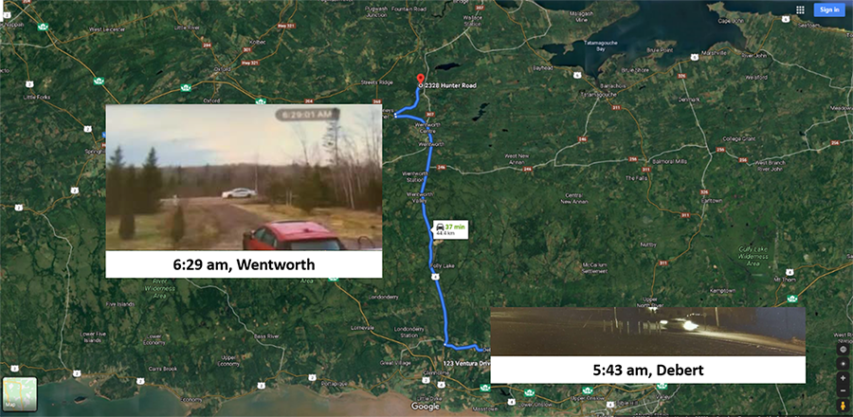
An annotated RCMP map shows the killer’s route from 123 Ventura Drive in Debert to 2328 Hunter Road in Wentworth. Insets of still images taken from different videos show the killer’s replica police car at 5:43am in Debert and passing a driveway on Hunter Road in Wentworth at 6:29am.
As they say, “read the whole thing“, as the events unfold with what seems like an endless series of missed opportunities on the part of the RCMP to stop the killings.
H/T to Colby Cosh for the link.
How They Did It – Baby Names in Ancient Rome (Tria Nomina)
Invicta
Published 9 Apr 2016The Romans took great pride in setting themselves apart from foreigners and even themselves. The tria nomina naming convention was one such way of achieving this and can tell us much about an individual.
Literary Sources:
Caesar: Life of a Colossus by Adrian Goldsworthy
Who’s Who in the Roman World by John HazelGame Engine:
Total War: Rome IIMusic:
Cinematic Music – “Beneath the Sun”
Cinematic Music – “Fade Away”
QotD: Protectionists misunderstand the role of money
A Protectionist is Someone Who … thinks that the ultimate purpose of producing goods and services is to use them to acquire as much money as possible. Unlike a free-trader who understands that the purpose of producing goods and services is to acquire for yourself and your family as many as possible real goods and services to raise as much as possible your standard of living – and who understands that exchanging for money what you directly produce is merely a means of lowering your cost of acquiring in exchange as many as possible goods and services produced by others – the protectionist thinks that the ultimate purpose of producing real goods and services is to use them to acquire as much money as possible.
The Econ 101 teacher typically draws on the white board a diagram of two countries trading with each other. Country A is shown exporting (say) steel to country B in exchange for dollars, and then using those dollars to buy lumber from country B. The Econ 101 teacher informs his or her class that, while these exchanges are mediated by dollars, what ultimately is going on in this diagram is that the people of country A produce steel and send some of that steel to the people of country B because the people of country A want lumber from country B. Likewise, the people of country B produce lumber and send some of it to the people of country A because the people of country B want steel from country A. “The money that you see, class,” explains the Econ 101 teacher, “merely facilitates the exchange of steel for lumber. What’s important here is the getting of steel and of lumber. Money is a tool used by the people of country A to transform some of the steel they produce into lumber that they want to consume. Likewise, money is a tool used by the people of country B to transform some of the lumber they produce into steel that they want to consume.”
The protectionist thinks of this hypothetical two-country exchange entirely differently from the way that the Econ 101 teacher thinks of it. For the protectionist, the people of country A produce steel as a means of getting money; that is the ultimate goal. And the people of country B produce lumber as a means of getting money; that – the getting of money – is the ultimate goal. While for the Econ 101 teacher the two-country diagram that he or she draws is meant to show how money facilitates the ultimate acquisition by the peoples of each country of real goods, for the protectionist the diagram seems to show that the production of real goods is a means of facilitating the ultimate acquisition by the peoples of each country of money.
Don Boudreaux, “A Protectionist is Someone Who…”, Café Hayek, 2018-04-10.

